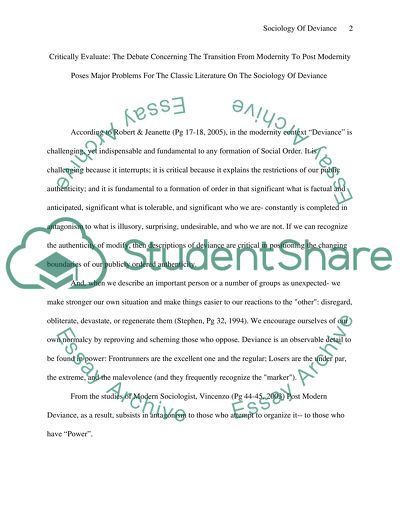Cite this document
(“The Debate Concerning The Transition From Modernity To Post Modernity Essay”, n.d.)
The Debate Concerning The Transition From Modernity To Post Modernity Essay. Retrieved from https://studentshare.org/miscellaneous/1525210-the-debate-concerning-the-transition-from-modernity-to-post-modernity-poses-major-problems-for-the-classic-literature-on-the-sociology-of-deviance
The Debate Concerning The Transition From Modernity To Post Modernity Essay. Retrieved from https://studentshare.org/miscellaneous/1525210-the-debate-concerning-the-transition-from-modernity-to-post-modernity-poses-major-problems-for-the-classic-literature-on-the-sociology-of-deviance
(The Debate Concerning The Transition From Modernity To Post Modernity Essay)
The Debate Concerning The Transition From Modernity To Post Modernity Essay. https://studentshare.org/miscellaneous/1525210-the-debate-concerning-the-transition-from-modernity-to-post-modernity-poses-major-problems-for-the-classic-literature-on-the-sociology-of-deviance.
The Debate Concerning The Transition From Modernity To Post Modernity Essay. https://studentshare.org/miscellaneous/1525210-the-debate-concerning-the-transition-from-modernity-to-post-modernity-poses-major-problems-for-the-classic-literature-on-the-sociology-of-deviance.
“The Debate Concerning The Transition From Modernity To Post Modernity Essay”, n.d. https://studentshare.org/miscellaneous/1525210-the-debate-concerning-the-transition-from-modernity-to-post-modernity-poses-major-problems-for-the-classic-literature-on-the-sociology-of-deviance.


